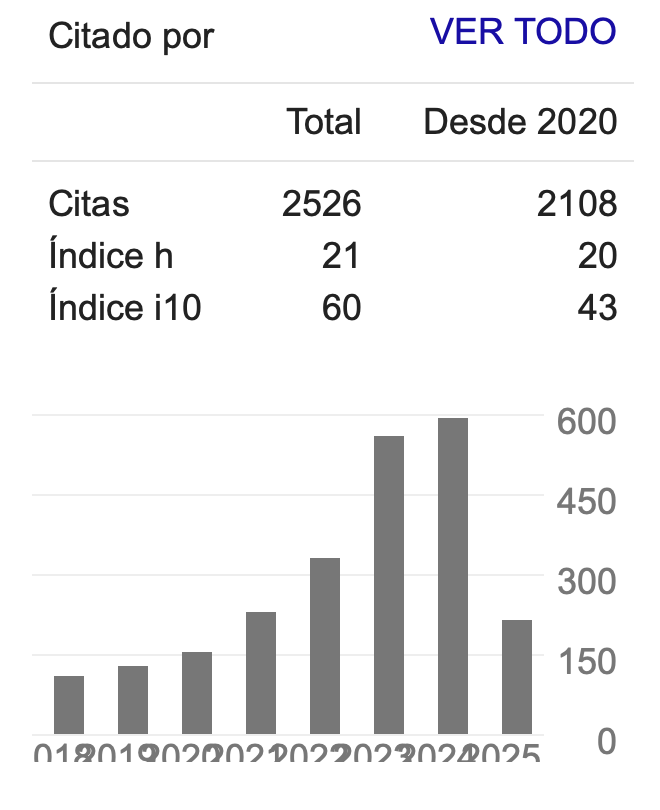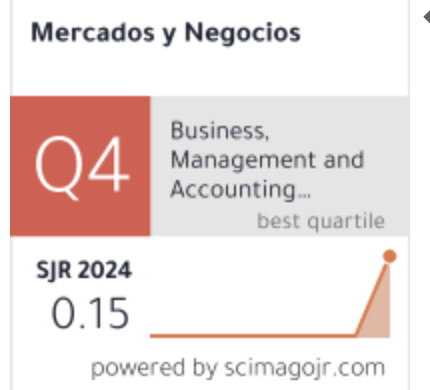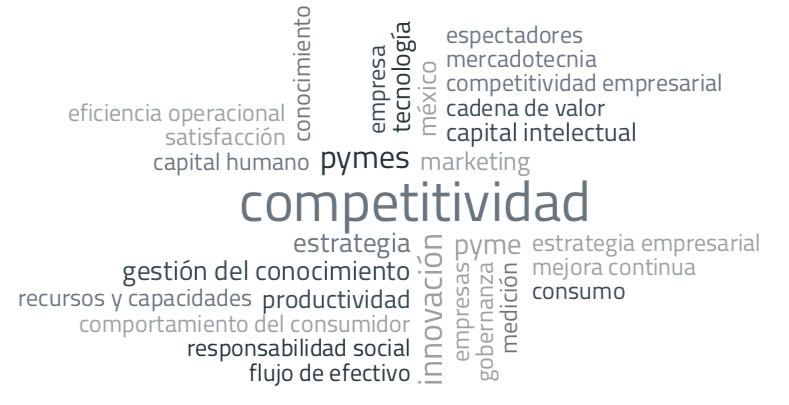Augmented Reality in Fashion Retail: Enhancing Consumer Decision-Making and Engagement
DOI:
https://doi.org/10.32870/myn.vi56.7867Keywords:
Fashion industry, Augmented Reality (AR), , Consumer Decision-Making, , Fashion Industry, , Digital Marketing, , Consumer EngagementAbstract
The present study investigated the impact of Augmented Reality (AR) across consumers in the fashion industry by examining the role of AR strategies in the purchasing routine of consumers in India, investigating the impact of AR technologies on the digital populace, and exploring the factors associated with the purchasing decision. In addition, the effect of AR on consumer engagement is illustrated. A quantitative methodology research approach was applied, and data were collected from 200 consumers using a purposive sampling technique with the aid of a structured questionnaire. The quantitative data were analysed using the SPSS tool version 23 package by performing ANOVA, frequency, and correlation analysis. The outcomes of the study revealed that perceived benefits of AR, likely authenticity, and return rates impact consumer decision-making strategies. Furthermore, discovered the determinants to improve the buyer’s decision effectively. The research study implies that the brands should adopt AR strategies to integrate with the values and choices of consumers to nurture a sustainable association. Overall, the study recommends effective implementation of AR technologies to provide enhanced shopping experiences through the amalgamation of physical atmosphere and digital systems.References
Alayli, S. (2023). Factors Influencing the Establishment of Clothing Retailers in the Metaverse: The Role of Metaverse Technology as a Mediator. Dutch Journal of Finance and Management, 5(1), 22281. https://doi.org/10.55267/djfm/13580
Atique, S. (2024). Consumer Attitudes Towards Augmented Reality in Fashion Retail: A Market Study. Journal of Socio-Educational Dynamics-JSED, 2(1), 44-59. https://doi.org/10.1109/ICAIT61638.2024.10690357
Barta, S., Gurrea, R., & Flavián, C. (2023a). How augmented reality increases engagement through its impact on risk and the decision process. Cyberpsychology, Behavior, and Social Networking, 26(3), 177-187. https://doi.org/10.1089/cyber.2022.0087
Barta, S., Gurrea, R., & Flavián, C. (2023b). Using augmented reality to reduce cognitive dissonance and increase purchase intention. Computers in Human Behavior, 140, 107564. https://doi.org/10.1016/j.chb.2022.107564
Baur, N. (2019, June). Linearity vs. circularity? On some common misconceptions on the differences in the research process in qualitative and quantitative research. Frontiers in Education, 4, 53.
Carvalho, C., & Abreu, M. (2023). A Perspective on the future of the fashion and textile sector in Portugal with the use of AI, AR and VR technological tools. International Fashion and Design Congress.
Dağ, K., Çavuşoğlu, S., & Durmaz, Y. (2024). The effect of immersive experience, user engagement and perceived authenticity on place satisfaction in the context of augmented reality. Library Hi Tech, 42(4), 1331-1346. https://doi.org/10.1108/LHT-10-2022-0498
Dogra, P., Kaushik, A. K., Kalia, P., & Kaushal, A. (2023). Influence of augmented reality on shopping behavior. Management Decision, 61(7), 2073-2098. https://doi.org/10.1108/MD-02-2022-0136
Enyejo, J., Obani, O., Afolabi, O., Igba, E., & Ibokette, A. I. (2024). Effect of Augmented Reality (AR) and Virtual Reality (VR) experiences on customer engagement and purchase behavior in retail stores. Magna Scientia Advanced Research and Reviews, 11(2), 132-150. https://doi.org/10.30574/msarr.2024.11.2.0116
Erdmann, A., Mas, J., & Arilla, R. (2023). Value‐based adoption of augmented reality: A study on the influence on online purchase intention in retail. Journal of Consumer Behaviour, 22(4), 912-932. https://doi.org/10.1002/cb.1993
Eru, O., Topuz, Y. V., & Cop, R. (2022). The effect of augmented reality experience on loyalty and purchasing intent: an application on the retail sector. Sosyoekonomi, 30(52), 129-155. https://doi.org/10.17233/sosyoekonomi.2022.02.08
Fani, V., Antomarioni, S., Bandinelli, R., & Ciarapica, F. E. (2023). Data mining and augmented reality: an application to the fashion industry. Applied Sciences, 13(4), 2317. https://doi.org/10.3390/app13042317
Hilal, A., & Saud, N. (2023). The impact of the use of augmented reality on online purchasing behavior sustainability: The Saudi consumer as a model. Sustainability, 15(6), 5448. https://doi.org/10.3390/su15065448
Hsu, W.-C., Lee, M.-H., & Zheng, K.-W. (2024). From virtual to reality: The power of augmented reality in triggering impulsive purchases. Journal of Retailing and Consumer Services, 76, 103604. https://doi.org/10.1016/j.jretconser.2023.103604
Idrees, S., Vignali, G., & Gill, S. (2023). Interactive marketing with virtual commerce tools: purchasing right size and fitted garment in fashion metaverse. The Palgrave Handbook of interactive marketing (pp. 329-351): Springer. https://doi.org/10.1007/978-3-031-14961-0_15
Irfan Rais, M. (2025). Empirical Study of Social Media Marketing’s Impact on Brand Image and Loyalty in Retail, Muscat. Mercados y Negocios, (54), 33–56. https://doi.org/10.32870/myn.vi54.7770
Jaganathan, M., Perumal, S., Shaari, H., Sulaiman, Y., & Mat, N. K. N. (2025). Consumer attitude as a mediator in the adoption of smart retail technologies in emerging market. Multidisciplinary Reviews, 8(4), 2025101-2025101. https://10.31893/multirev.2025101
Jiang, X., Deng, N., & Zheng, S. (2023). Understanding the core technological features of virtual and augmented reality in tourism: A qualitative and quantitative review. Current Issues in Tourism, 26(21), 3444-3464. https://doi.org/10.1080/13683500.2023.2214847
Jiang, Z., & Lyu, J. (2024). The role of augmented reality app attributes and customer-based brand equity on consumer behavioral responses: an SOR framework perspective. Journal of Product & Brand Management, 33(6), 702-716. https://doi.org/10.1108/JPBM-09-2023-4706
Joldescu-Stan, G. (2023). Economic Perspectives and The Role of Technology in Cultural Heritage Protection and Sustainable Development. Online Journal Modelling the New Europe, (43), 18-31.
Kandel, B. (2020). Qualitative Versus Quantitative Research. Journal of Product Innovation Management, 32(5), 658.
Kumar, H., Rauschnabel, P. A., Agarwal, M. N., Singh, R. K., & Srivastava, R. (2024). Towards a theoretical framework for augmented reality marketing: A means-end chain perspective on retailing. Information & Management, 61(2), 103910. https://doi.org/10.1016/j.im.2023.103910
Lakens, D. (2022). Sample size justification. Collabra: psychology, 8(1), 33267. https://doi.org/10.1525/collabra.33267
Maxwell, J. A. (2021). Why Qualitative Methods are Necessary for Generalization. Qualitative Psychology, 8(1), 111. https://doi.org/10.1037/qup0000173
McLeod, S. (2019). Qualitative vs Quantitative Research Methods & Data Analysis. Simply Psychology. Link: https://www.simplypsychology.org/qualitative-quantitative.html
Mekonnen, A. (2024). Augmented reality (AR) in retailing: customers’ experience in luxury fashion. In Digital Transformation for Fashion and Luxury Brands: Theory and Practice 91-106, Springer. https://doi.org/10.1007/978-3-031-35589-9_5
Mohajan, H. K. (2020). Quantitative research: A successful investigation in natural and social sciences. Journal of Economic Development, Environment and People, 9(4), 50-79.
Nadeem, W., Alimamy, S., Ashraf, A. R., & Wang, K. (2025). Understanding consumers’ value co-creation and value co-destruction with augmented reality service marketing. Journal of Services Marketing. https://doi.org/10.1108/JSM-07-2024-0332
Naeem, M. (2025). Emerging trends in global E-retailing: exploring the dark side of scan and go in-store technologies in consumer shopping journeys. International Marketing Review, 42(2-3). https://doi.org/10.1108/IMR-06-2023-0110
Nair, P., & Kumar, S. (2025). Crafting Couture: AI's Role in Personalizing Unique Consumer Experiences Through Co-Creation. In Leveraging AI for Effective Digital Relationship Marketing (199-222), IGI Global. https://doi.org/10.4018/979-8-3693-5340-0.ch007
Nandhakumar, C., Gayathri, P., Kaviya, B., Kaviya, S., & Kirupa, L. (2025). Interactive Virtual Fitting Room: Real-Time E Commerce Accessories Try-on with Image Descriptors using Deep Learning. In The 2025 6th International Conference on Mobile Computing and Sustainable Informatics (ICMCSI).
Periyasamy, A. P., & Periyasami, S. (2023). Rise of digital fashion and metaverse: influence on sustainability. Digital Economy and Sustainable Development, 1(1), 16. https://doi.org/10.1007/s44265-023-00016-z
Qin, H., Peak, D. A., & Prybutok, V. (2021). A virtual market in your pocket: How does mobile augmented reality (MAR) influence consumer decision making? Journal of Retailing and Consumer Services, 58, 102337. https://doi.org/10.1016/j.jretconser.2020.102337
Quattelbaum, B., Breckenfelder, C., Voigt, J., & Maas, L. (2022). Possibilities and limits of virtual and augmented reality in the purchase decision process for clothing. Communications in Development and Assembling of Textile Products, 3(1), 42-50. https://doi.org/10.25367/cdatp.2022.3.p42-50
Rainsberger, L. (2023). The modern customer—The PHANTOM. In The Modern Customer–the PHANTOM, (5-74). Springer. https://doi.org/10.1007/978-3-658-39196-6_3
Sagar, S. (2024). The Impact Of Digital Transformation On Retail Management And Consumer Behavior. Journal of Business and Management, 26(1), 06-14.
Sarkis, N., Jabbour Al Maalouf, N., Saliba, E., & Azizi, J. (2025). The impact of augmented reality within the fashion industry on purchase decisions, customer engagement, and brand loyalty. International Journal of Fashion Design, Technology and Education, 1-10. https://doi.org/10.1080/17543266.2025.2470187
Sreekumar, D. (2023). What is research methodology? Definition, types, and examples. Paperpal Blog-Academic Writing Guides.
Stratton, S. J. (2021). Population research: convenience sampling strategies. Prehospital and disaster Medicine, 36(4), 373-374. https://doi.org/10.1017/S1049023X21000649
Taherdoost, H. (2021). Data collection methods and tools for research; a step-by-step guide to choose data collection technique for academic and business research projects. International Journal of Academic Research in Management (IJARM), 10(1), 10-38.
Taherdoost, H. (2023). E-Business Models and Strategies E-Business. In Essentials: Building a Successful Online Enterprise (25-50), Springer. https://doi.org/10.1007/978-3-031-39626-7_2
Trivedi, T. (2023). Generation Z Inclined Toward Immersive Shopping Experiences: AR Virtual Try-On in Online Retail in India Immersive. In Technology and Experiences: Implications for Business and Society (159-170), Springer. https://doi.org/10.1007/978-981-99-8834-1_9
Wu, C. (2024). The Virtual Reality and Augmented Reality Adoption Impact on Customer Loyalty for the Fashion Brands. Pre-prints.org. https://doi.org/10.20944/preprints202307.1408.v3
Xue, L., Parker, C. J., & Hart, C. A. (2023). How augmented reality can enhance fashion retail: a UX design perspective. International Journal of Retail & Distribution Management, 51(1), 59-80. https://doi.org/10.1108/IJRDM-09-2021-0435
Downloads
Published
How to Cite
Issue
Section
License
Copyright (c) 2025 Sankalp Dandawate, Palak Khanna, Amol Gawande, Atul Kumar, Stuti Shukla

This work is licensed under a Creative Commons Attribution-NonCommercial 4.0 International License.
Mercados y Negocios by Department of Mercadotecnia y Negocios Internacionales. University of Guadalajara is licensed under a License Creative Commons Attribution-NonCommercial 4.0 International.
The author retains the copyright.








